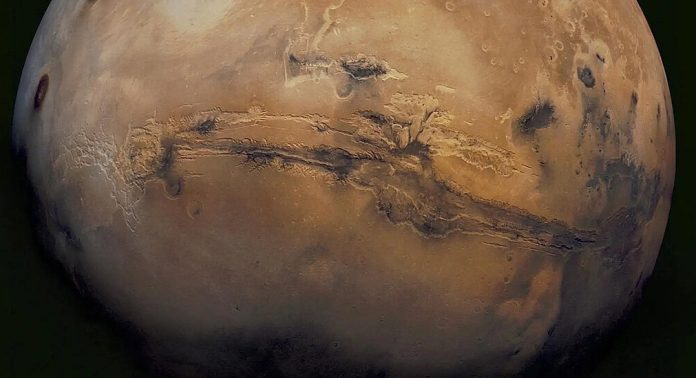
Scientists are working on a plan to explore one of the most mysterious places on Mars: Valles Marineris, the largest canyon in the solar system.
Stretching 3,000 kilometers long, 600 kilometers wide, and up to 8 kilometers deep, this enormous canyon could hold important clues about Mars’ past, including whether life once existed there.
To explore this difficult terrain, the German Space Agency (DLR) is leading a project called VaMEx (Valles Marineris Explorer), which aims to send a swarm of robots to Mars to explore caves, collect data, and search for signs of water.
Instead of relying on a single spacecraft or rover, the VaMEx mission will use a swarm of robots that can work together.
These robots will move in different ways: some will fly, others will walk, and some will drive across the Martian surface.
They will work as a team, collecting images and data from the ground, air, and even inside caves, where they might find traces of water or other signs of life in protected environments.
Why caves are so important
Caves are especially interesting because they offer protection from the harsh conditions on Mars, such as extreme cold and dangerous radiation from space.
These underground spaces could preserve evidence of ancient life from billions of years ago, when Mars was more like Earth.
Scientists have already found large caves on the Moon, so there’s hope that Mars might have similar caves waiting to be explored.
One of the biggest challenges for this mission is how the robots will communicate with each other and with Earth. When the robots enter caves, they won’t be able to send signals directly to the surface. To solve this, the mission will use special repeater stations—small devices that pass along information from the robots in the caves to a command center on the surface. From there, the data can be sent back to Earth for analysis.
The VaMEx mission also includes some clever new technology. One example is the use of “autorotation bodies,” which are small sensors shaped like maple seeds.
These sensors are dropped from the air and spin gently to the ground, where they can gather data and act as part of the communication network.
Another exciting feature is a special camera mounted on the surface gateway, which will look up at the Martian sky. While previous missions have focused on the planet’s surface, this camera will watch for meteors, lightning, and other unusual phenomena. Researchers hope to use this sky camera to gather even more information about Mars’ atmosphere.
Before sending the robots to Mars, the team will test the swarm system on Earth in 2025.
If successful, the technology could be adapted to withstand Mars’ harsh conditions, including freezing temperatures and massive dust storms.
This mission could unlock new discoveries about Mars and bring us closer to understanding whether life ever existed on the red planet.



